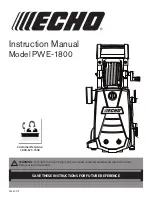
3
Lock
Pin
Fig C
Fig A
Steamer
Basket
primary Cover
Handle
pressure Regulator/
Steam Release Valve
Vent pipe
Air Vent/
Cover Lock
Cover
Overpressure
plug
Trivet
Stainless
Steel Body
Sealing Ring
Secondary
Cover
Handle
4
5
9
1
2
3
8
7
6
10
11
Air Vent/Cover Lock in
UP Position Pressure in Unit
Air Vent/Cover Lock in DOWN
Position No Pressure in Unit
Fig B
Sealing Ring in
Sealing Ring
Groove
Stop Tab
Fig D
GeTTiNG aCQuaiNTed
your pressure cooker is like a saucepan with a very special cover that locks in place. Air is automatically exhausted and steam is
sealed inside creating pressure within the unit. Under pressure, internal temperatures in the cooker are raised above the normal
boiling point of water, causing foods to cook faster. At 15 pounds pressure, a temperature of 250° F. (or 121° C.) is reached inside
the pressure cooker. This higher temperature speeds cooking and the moist steam atmosphere tenderizes meats naturally.
It is important to become familiar with the various parts
and features of the pressure cooker (Fig. A) and to read the
“HOW TO USE” section beginning on page 4 before using
the unit for the first time. Here are some of the key parts of
the pressure cooker:
The
PRESSURE REGULATOR/STEAM RELEASE
VALVE
(1) fits onto the
VENT PIPE
(2) located on the
PRIMARY COVER HANDLE
(3). The pressure regulator
indicates when 15 pounds pressure is reached and controls
pressure inside the unit. A steady flow of steam escaping
from the pressure regulator and the sound of the steam vent-
ing indicates that proper cooking pressure (15 pounds) is
being maintained. After cooking is completed, the pressure
regulator can be turned counterclockwise to the steam re-
lease position to quickly release pressure from the cooker.
The
AIR VENT/COVER LOCK
(4) automatically exhausts
air from the pressure cooker as you begin heating the unit.
When pressure begins to build, it slides up, causing the lock
pin to lock the cover on. The top of the air vent/cover lock
can be seen through a hole in the
SECONDARY COVER
HANDLE
(5), so you can tell at a glance if there is pressure
inside the unit. If there is pressure in the cooker, the air vent/
cover lock will be in the up position. (It will be flush with
the cover handle.) If there is no pressure in the unit, the air
vent/cover lock will be in the down position (Fig. B).
The
SEALING RING
(6) fits
around the inside rim of the
cover (see figure below) and
forms a pressure tight seal be-
tween the
COVER
(7) and the
STAINLESS STEEL BODY
(8) of the pressure cooker. Steam
is automatically
released by the
OVERPRESSURE PLUG
(9) if the vent pipe becomes clogged and
excess pressure cannot be released normally. The top of the overpressure plug can be seen
through a hole in the secondary cover handle. The overpressure plug is a safety device
and you should check its condition periodically (see page 7, step 10).
For steaming foods, the
STEAMER BASKET
(10) can be placed on the
TRIVET
(11) in the bottom of the pressure cooker. The steamer basket when used with the trivet
will hold foods, such as vegetables, out of the cooking liquid. Because flavors will not
intermingle when foods are pressure cooked out of the cooking liquid, it allows several
different foods to be cooked at the same time.
Before using your pressure cooker for the first time,
remove the seaing ring by simply
pulling it out of the inside rim of the cover. Wash ring, cover, body, trivet, and steamer
basket in hot, sudsy water to remove any packaging material and white manufacturing
lubricant. Rinse all parts with warm water and dry. Then, replace the sealing ring, being
careful to fit it under the lock pin (Fig. C) and the stop tabs (Fig. D) which are located
on the inside rim of the cover.




































